GrabCAD
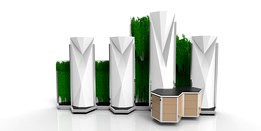
Air filtering sound barrier
by GrabCAD
Last crawled date: 1 year, 11 months ago
This concept is based on the basic airflow principles. Air is being guided through the space between the panels. The plants grow on the inside of
the panels. This way the plants can catch more air in the same amount of time then in the situation where you have less airflow. In order to make the panels look more interesting we added polygons to the surfaces in the panels. This gives the panels more depth and ik makes them look more interesting and modern.
The panels can still be easily produced using rubber presses. The panels itself won’t be sturdy enough to keep standing up right. Also when someone leans against it it might shift. This is why it’s nessecary to mount them to a frame. The panel is being clamped between two extruded frame profiles. These two profiles are attached to the bottom frame which will remain underground. This way the panels can be ankered to the ground without compromising the overal look. People have the ability to sit down near the construction. This is possible because of two or more seats which illuminate in the dark using LED lights. The construction is based on a modular system. There are three different panels available. The customer can make is own combination. This contibutes to many combinations and lengths in favour of orignality with the least amount of parts.
The hydrophonic watering system
The plants in the planter ofcourse have to be wattered on a regular basis. This can be done both manually and automatically. We cover the automatic mechanism first. The automatic hydrophonic system depends on the water supply that comes from the rain. The rain enters the first reservoir which is located underground in the grounded part of the frame. The water could be contaminated so it is mandatory that the water gets filtered before it gets in contact with the roots of the plants. After the water went through the filter it will be able to arrive in the next section of the reservoir. This is the location
where the water will be temporary stored before use or disposal. The water is able to make contact with the medium* in the next and last section of the reservoir. The medium is able to absorb the water. The roots of the plants can grow in the medium and can suck the water out of the medium when it needs water.
This system is self sustaining and requires a minimal amount of human interference. it a continuous cycle. A section view of the first reservoir is viewable on the
right. *A medium is a material where the roots can settle. Mediums absorb the water and contains it.
The one way valves
“We can’t control the environment, but we can use it in our favor.” We are currently living in a country where it rains a lot. Therefor our planter has to adopt to the
weather conditions. If it rains a lot in a small period of time eventually the reservoir will get full. If the system doesn’t do anything it will overflow and drown the
plant in it. To prevent this a one way valve is added. When the maximum water level has been reached (just between section one and section two) a certain pressure is present beneath the water level. When this pressure is reached a one way valve opens. This is possible because the pressure pushes a spring in the valve. It would be a shame to just dispose the water into the soil. Then you can consider the dumped water as lost. And thats not what we want in a sustainable watering system. Thats why there is one one way valve connecte to a second reservoir which will fulfill another purpose.
Using this system the excessive water from reservoir one is transported to reservoir two. But at some point both reservoirs will be full. In this situation the one way
valve has the same pressure on both sides and doesn’t open or close anymore. Thats where a second one way valve comes in. The pressure rises slightly which opens the second valve and the water eventually leaves into the ground. You still lose water but you pospone the lost water as long as possible.
The second reservoir
In the previous sub-chapter we talked about the automatic watering system in reservoir one. Next to this automatic system there was also a desire for a manual
water system in the favor of fysical interaction with the planter. That is where the second reservoir comes in. This reservoir contains the excessive water from reservoir one. In this reservoir a water pump is located. This water is pumped in a hose that goes through one of the frames. The water eventually leaves the frame through tiney holes on the sides. When the water left the frame it serves for cleaning and water ing the plant. The whole system gets activated when the user pushes the button located at one of the seats. The system itself is being activated by the button. you can only push the button once. then you cannot push
the button for four hours. This to prevent the plant to be wattered too much.
The seat
covered before this concept contains a various amount of seats (depens how many are ordered). The button for the cleaning/ watering system is integrated
in this seat. The seat itself is based of an aluminum frame which hold the wooden planks togeter. This gives the seat the sturdyness and natural look it needs. Thereby the wooden parts make the seat the ideal part of the concept for the social workers to assemble. The seats itself contain a lightscourse inside. When turned on this illuminates the top side and the logo on the top.
If you want more information regarding to this concept please contact me for the original report.
the panels. This way the plants can catch more air in the same amount of time then in the situation where you have less airflow. In order to make the panels look more interesting we added polygons to the surfaces in the panels. This gives the panels more depth and ik makes them look more interesting and modern.
The panels can still be easily produced using rubber presses. The panels itself won’t be sturdy enough to keep standing up right. Also when someone leans against it it might shift. This is why it’s nessecary to mount them to a frame. The panel is being clamped between two extruded frame profiles. These two profiles are attached to the bottom frame which will remain underground. This way the panels can be ankered to the ground without compromising the overal look. People have the ability to sit down near the construction. This is possible because of two or more seats which illuminate in the dark using LED lights. The construction is based on a modular system. There are three different panels available. The customer can make is own combination. This contibutes to many combinations and lengths in favour of orignality with the least amount of parts.
The hydrophonic watering system
The plants in the planter ofcourse have to be wattered on a regular basis. This can be done both manually and automatically. We cover the automatic mechanism first. The automatic hydrophonic system depends on the water supply that comes from the rain. The rain enters the first reservoir which is located underground in the grounded part of the frame. The water could be contaminated so it is mandatory that the water gets filtered before it gets in contact with the roots of the plants. After the water went through the filter it will be able to arrive in the next section of the reservoir. This is the location
where the water will be temporary stored before use or disposal. The water is able to make contact with the medium* in the next and last section of the reservoir. The medium is able to absorb the water. The roots of the plants can grow in the medium and can suck the water out of the medium when it needs water.
This system is self sustaining and requires a minimal amount of human interference. it a continuous cycle. A section view of the first reservoir is viewable on the
right. *A medium is a material where the roots can settle. Mediums absorb the water and contains it.
The one way valves
“We can’t control the environment, but we can use it in our favor.” We are currently living in a country where it rains a lot. Therefor our planter has to adopt to the
weather conditions. If it rains a lot in a small period of time eventually the reservoir will get full. If the system doesn’t do anything it will overflow and drown the
plant in it. To prevent this a one way valve is added. When the maximum water level has been reached (just between section one and section two) a certain pressure is present beneath the water level. When this pressure is reached a one way valve opens. This is possible because the pressure pushes a spring in the valve. It would be a shame to just dispose the water into the soil. Then you can consider the dumped water as lost. And thats not what we want in a sustainable watering system. Thats why there is one one way valve connecte to a second reservoir which will fulfill another purpose.
Using this system the excessive water from reservoir one is transported to reservoir two. But at some point both reservoirs will be full. In this situation the one way
valve has the same pressure on both sides and doesn’t open or close anymore. Thats where a second one way valve comes in. The pressure rises slightly which opens the second valve and the water eventually leaves into the ground. You still lose water but you pospone the lost water as long as possible.
The second reservoir
In the previous sub-chapter we talked about the automatic watering system in reservoir one. Next to this automatic system there was also a desire for a manual
water system in the favor of fysical interaction with the planter. That is where the second reservoir comes in. This reservoir contains the excessive water from reservoir one. In this reservoir a water pump is located. This water is pumped in a hose that goes through one of the frames. The water eventually leaves the frame through tiney holes on the sides. When the water left the frame it serves for cleaning and water ing the plant. The whole system gets activated when the user pushes the button located at one of the seats. The system itself is being activated by the button. you can only push the button once. then you cannot push
the button for four hours. This to prevent the plant to be wattered too much.
The seat
covered before this concept contains a various amount of seats (depens how many are ordered). The button for the cleaning/ watering system is integrated
in this seat. The seat itself is based of an aluminum frame which hold the wooden planks togeter. This gives the seat the sturdyness and natural look it needs. Thereby the wooden parts make the seat the ideal part of the concept for the social workers to assemble. The seats itself contain a lightscourse inside. When turned on this illuminates the top side and the logo on the top.
If you want more information regarding to this concept please contact me for the original report.
Similar models
grabcad
free

Water Control Valve. su kontrol valfi.
...at a preset value. a pressure sustaining valve is similar to a pressure reducing valve but governs the pressure...
3dwarehouse
free

Floating Valve
... manually to fill the water reservoir. likewise, when the water reservoir is full, we don't need to close the valve manually.
grabcad
free

Safety Valve Body
...lly releases a substance from a boiler, pressure vessel, or other system, when the pressure or temperature exceeds preset limits.
grabcad
free

non return valve
...with mixing loops in heating and cooling systems to ensure proper operation, and with domestic water systems to prevent backflow.
grabcad
free

Non Return Valve
...ith mixing loops in heating and cooling systems to ensure proper operation, and with domestic water systems to prevent back flow.
grabcad
free

Assembly of Lever Safety Valve
...lly releases a substance from a boiler, pressure vessel, or other system, when the pressure or temperature exceeds preset limits.
grabcad
free

NON RETURN VALVE - NRV
...rough the non-return valve causes a relatively large pressure drop, which has to be taken into account when designing the system.
grabcad
free

RAMSBOTTOM SAFETY VALVE
... the pressure or temperature exceeds preset limits. pilot-operated relief valves are a specialized type of pressure safety valve.
grabcad
free

Ramsbottom Safety Valve
... the pressure or temperature exceeds preset limits. pilot-operated relief valves are a specialized type of pressure safety valve.
thingiverse
free

Aeration Valve by rkapteyn
...he ball falls down in the seat and the valve allows air to flow from the top of the valve to the bottom. this prevents siphoning.
Barrier
3d_export
$5

Barriers
...barriers
3dexport
3d_ocean
$2

Barrier
...barrier
3docean
barricade barrier city emergency road security stop street
files: .3ds .c4d .obj
turbosquid
free

barrier
...barrier
turbosquid
free 3d model barrier for download as fbx on turbosquid: 3d models for games, architecture, videos. (1147784)
turbosquid
$1

Barrier
...turbosquid
royalty free 3d model barrier for download as obj on turbosquid: 3d models for games, architecture, videos. (1634389)
turbosquid
free

Barrier
...turbosquid
free 3d model barrier for download as fbx and dae on turbosquid: 3d models for games, architecture, videos. (1469726)
turbosquid
free

Barrier
...rbosquid
free 3d model barrier for download as fbx and blend on turbosquid: 3d models for games, architecture, videos. (1425350)
turbosquid
$15

barrier
...
royalty free 3d model barrier for download as fbx and blend on turbosquid: 3d models for games, architecture, videos. (1414596)
turbosquid
$10

Barriers
...id
royalty free 3d model barrier for download as fbx and obj on turbosquid: 3d models for games, architecture, videos. (1691091)
3d_export
$18
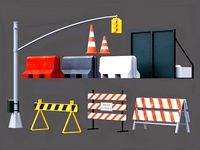
traffic barriers
...traffic barriers
3dexport
traffic barriers + 8k texture
3d_export
$5

construction barrier
...construction barrier
3dexport
construction barrier + 8k texture
Filtering
3d_export
$10
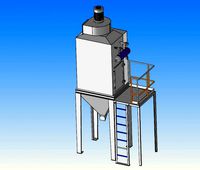
cartridge filter
...cartridge filter
3dexport
cartridge filter
3d_export
$6
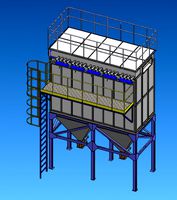
Bag filter
...bag filter
3dexport
bag filter
3d_export
$10

of dust filter
...of dust filter
3dexport
3d model of dust filter
3d_export
$10

of bag filter
...of bag filter
3dexport
3d model of bag filter
3d_export
$7

of bag filter
...of bag filter
3dexport
3d model of bag filter
turbosquid
$20

Filter
...ty free 3d model filter for download as ma, max, obj, and fbx on turbosquid: 3d models for games, architecture, videos. (1512887)
3d_export
$10
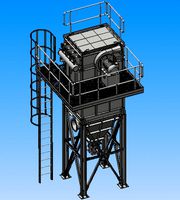
bag filter
...of textile filter cloth or non-woven felt, and the filtering effect of fiber fabric is used to filter the...
3ddd
$1

UFI Filter
...ufi filter
3ddd
фильтр , ufi
ufi oil filter
turbosquid
$30

Filter
... available on turbo squid, the world's leading provider of digital 3d models for visualization, films, television, and games.
turbosquid
$5

filters
... available on turbo squid, the world's leading provider of digital 3d models for visualization, films, television, and games.
Sound
turbosquid
$5
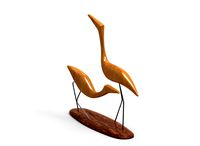
sound
...royalty free 3d model sound for download as max, obj, and fbx on turbosquid: 3d models for games, architecture, videos. (1211937)
3ddd
$1
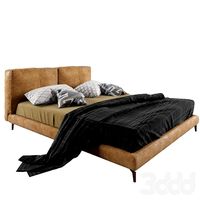
Sound Bed
...sound bed
3ddd
sound
bed
3ddd
$1
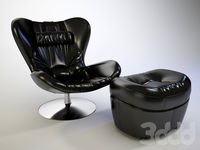
Natuzzi / SOUND
...natuzzi / sound
3ddd
natuzzi
natuzzi модель - sound
turbosquid
$109

Sound Boom
...bosquid
royalty free 3d model sound boom for download as c4d on turbosquid: 3d models for games, architecture, videos. (1568341)
turbosquid
$5

Sound Booster
...quid
royalty free 3d model sound booster for download as stl on turbosquid: 3d models for games, architecture, videos. (1363395)
turbosquid
$3

Sound Card
...bosquid
royalty free 3d model sound card for download as fbx on turbosquid: 3d models for games, architecture, videos. (1709721)
turbosquid
$1

Stereo Sound
...squid
royalty free 3d model stereo sound for download as obj on turbosquid: 3d models for games, architecture, videos. (1342541)
3d_ocean
$5

Sound Heart
... day wing wings
sound heart with wings. setup render and environment map with vray. thank you! please see some of my collection…
turbosquid
$45

Sound Car
...lty free 3d model sound car for download as max, fbx, and obj on turbosquid: 3d models for games, architecture, videos. (1540353)
turbosquid
$25

Speaker Sound
...ee 3d model speaker sound for download as 3ds, obj, and blend on turbosquid: 3d models for games, architecture, videos. (1323810)
Air
3ddd
$1
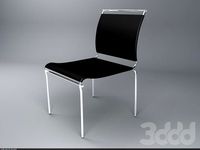
Calligaris air
...calligaris air
3ddd
air , calligaris
cтул calligaris air
3ddd
$1

Air freshener
...air freshener
3ddd
air freshener , освежитель
air freshener
design_connected
$16
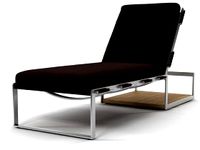
Air
...air
designconnected
flexform air lounge chairs computer generated 3d model. designed by antonio citterio.
turbosquid
$250
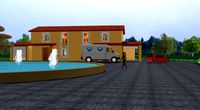
Heat pump air air
... available on turbo squid, the world's leading provider of digital 3d models for visualization, films, television, and games.
3d_export
$5
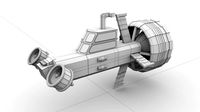
air
...air
3dexport
3ddd
$1
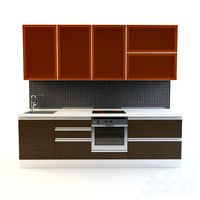
Кухня AIR
...кухня air
3ddd
air , мария
кухня air фабрики "мария"
3ddd
$1
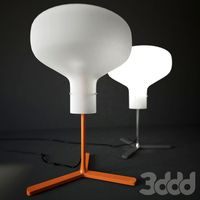
Лампа AIR
...лампа air
3ddd
boconcept , air
настольная лампа air, boconcept. в50½xø32см
3d_export
$40

air deflector
...air deflector
3dexport
air deflector
3d_export
$15

air purifier
...air purifier
3dexport
air purifier
3d_export
$5

macbook air
...macbook air
3dexport
macbook air
